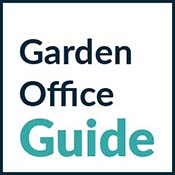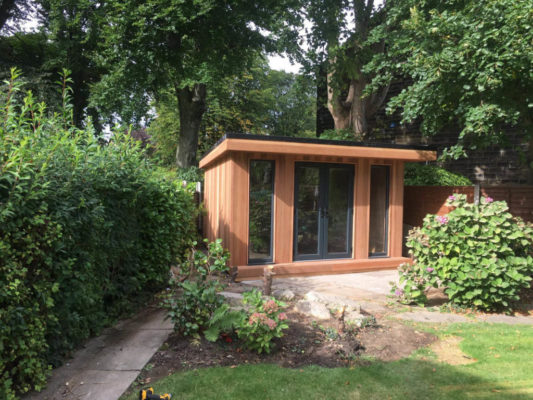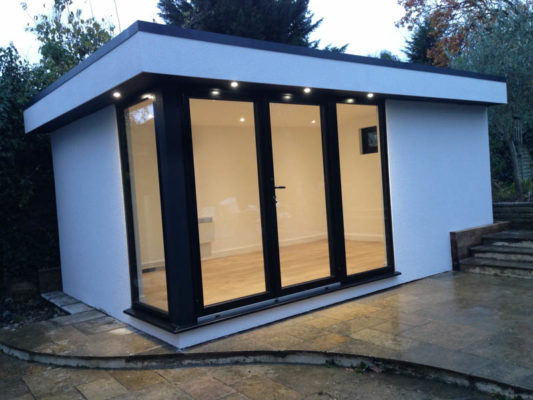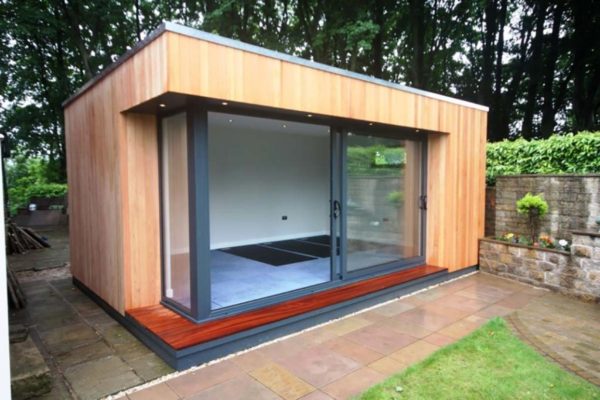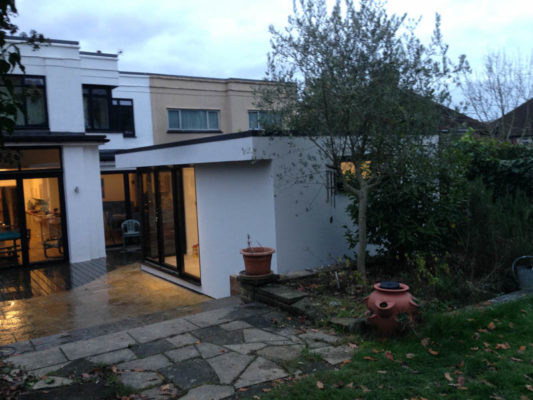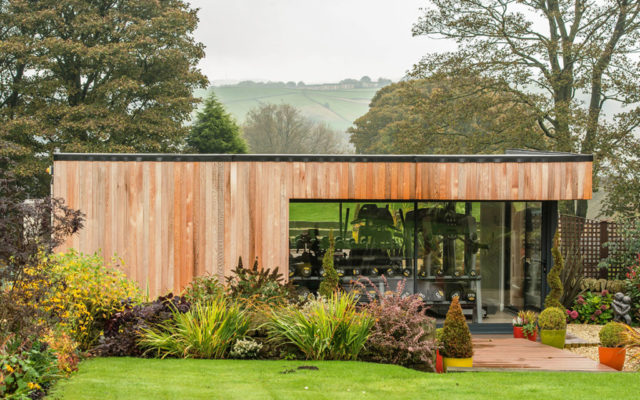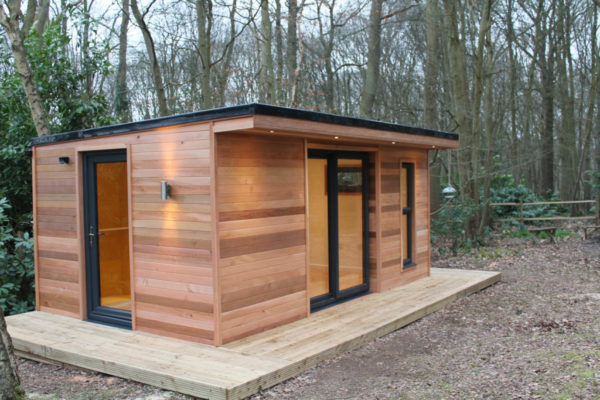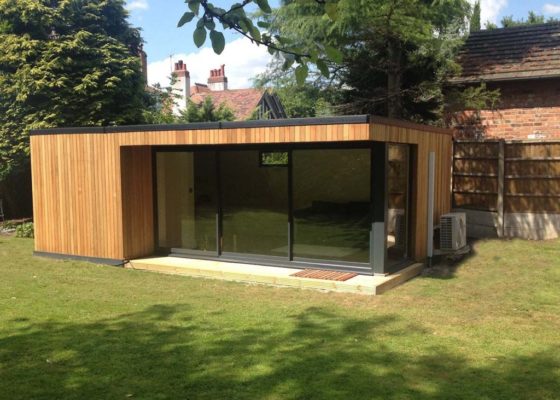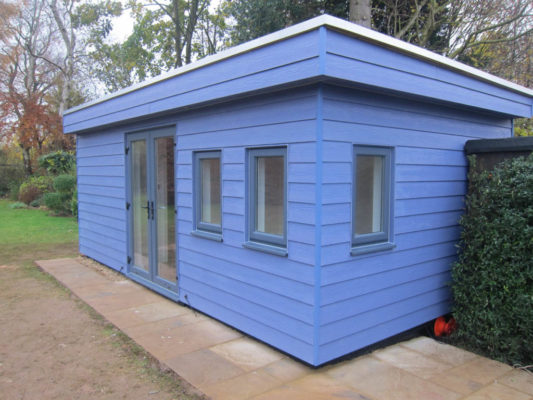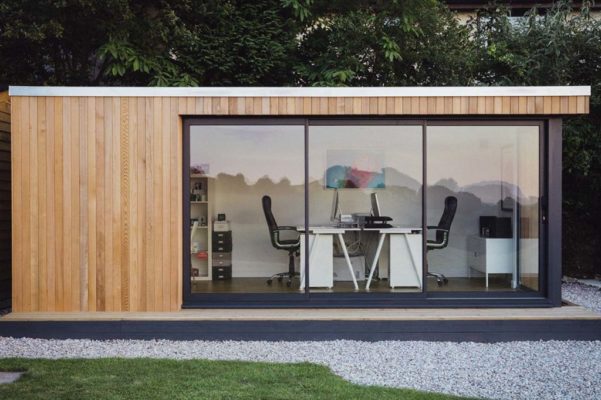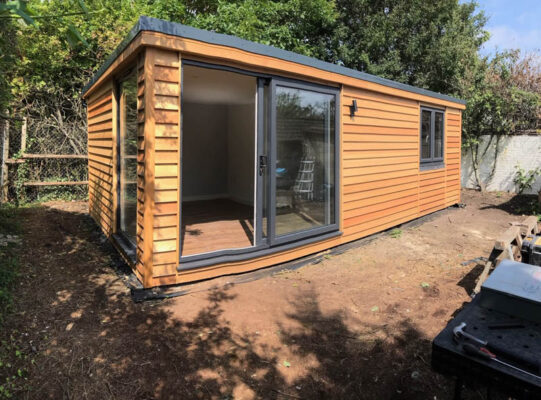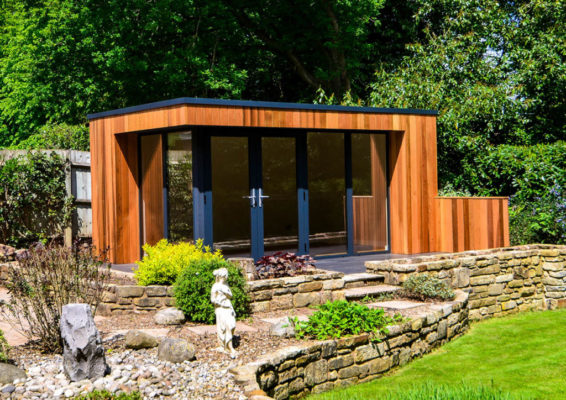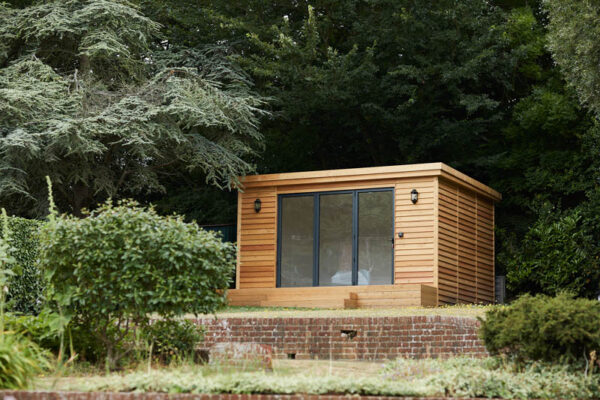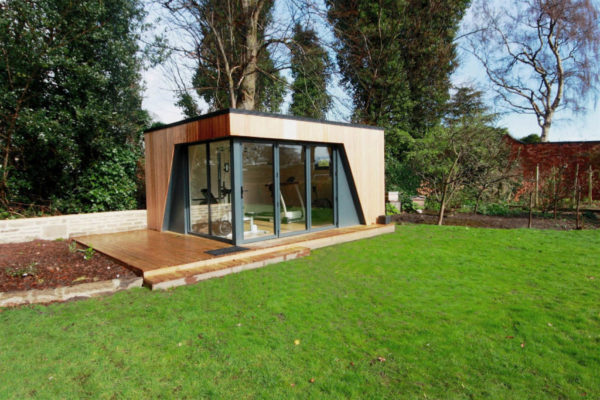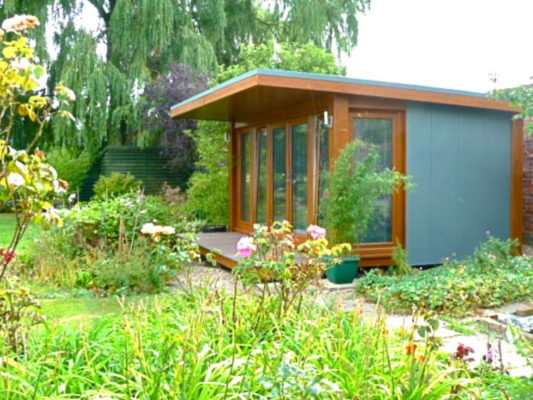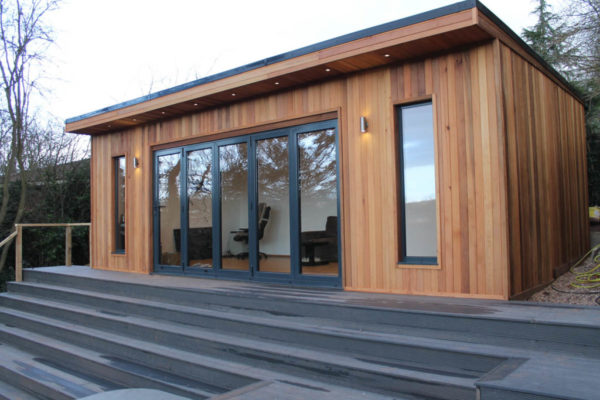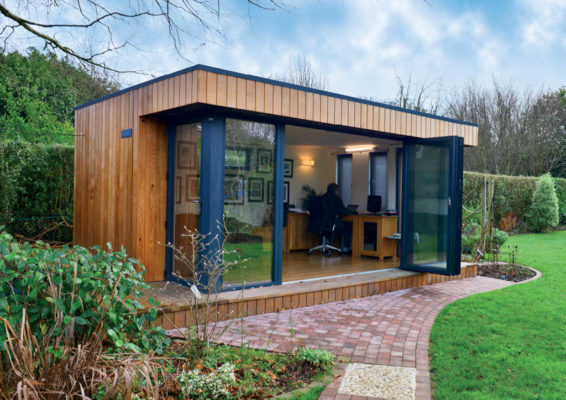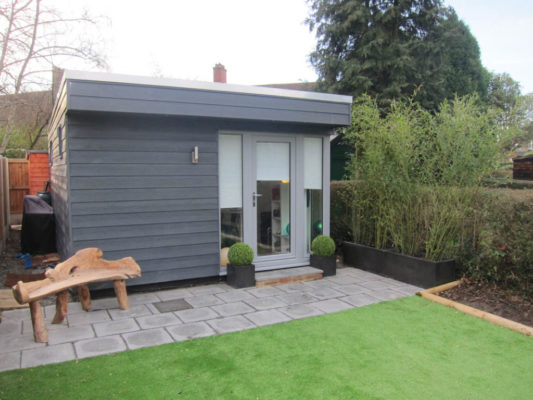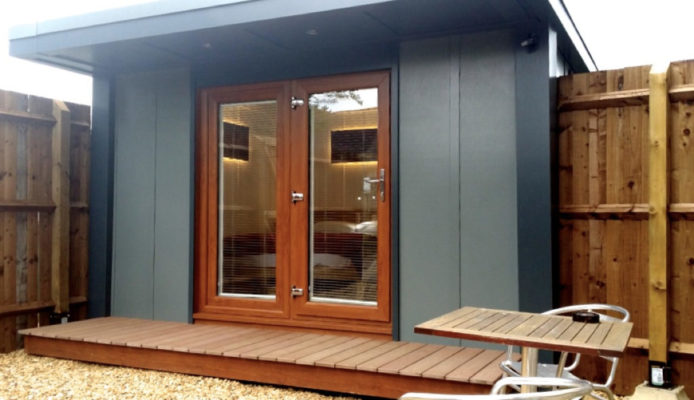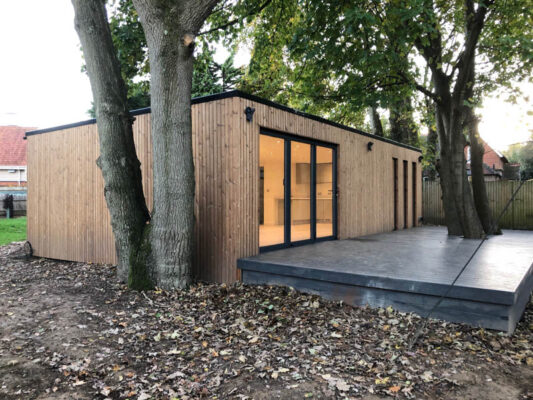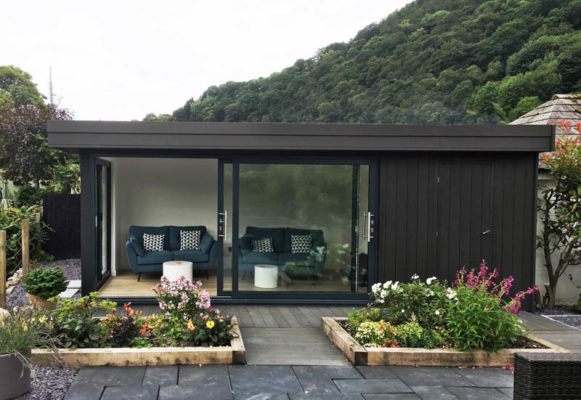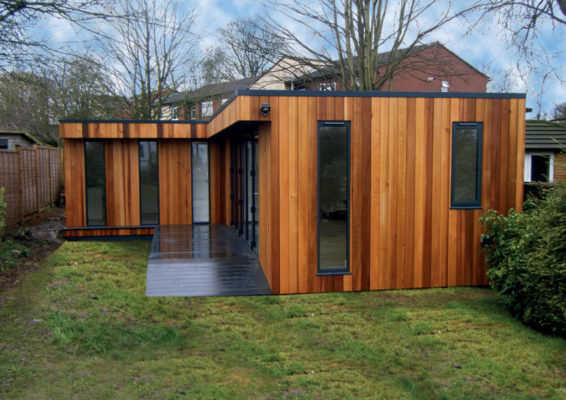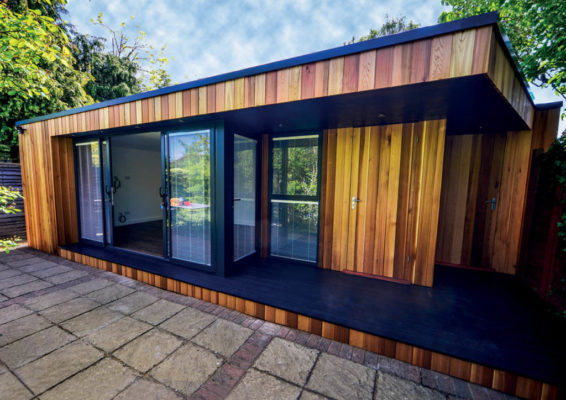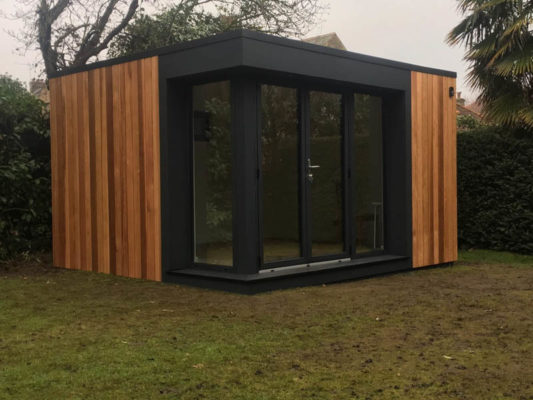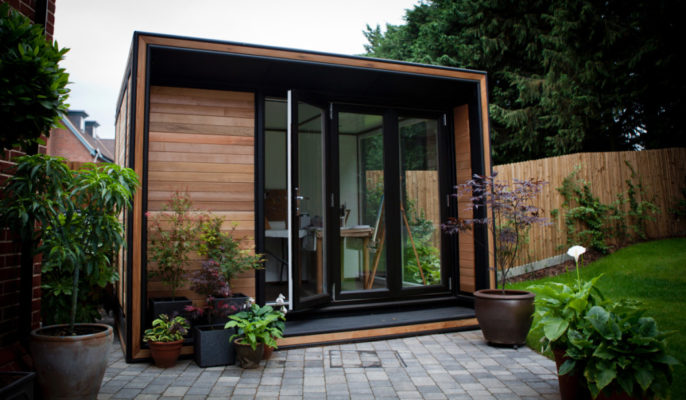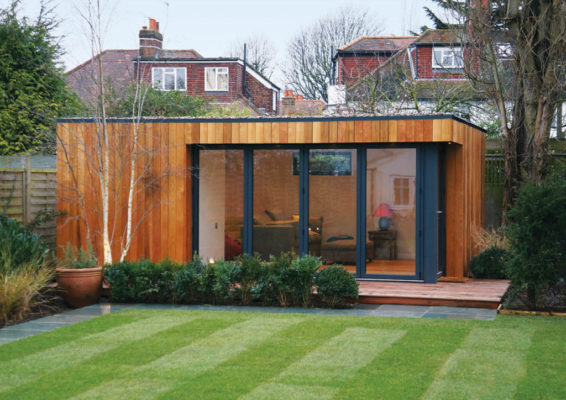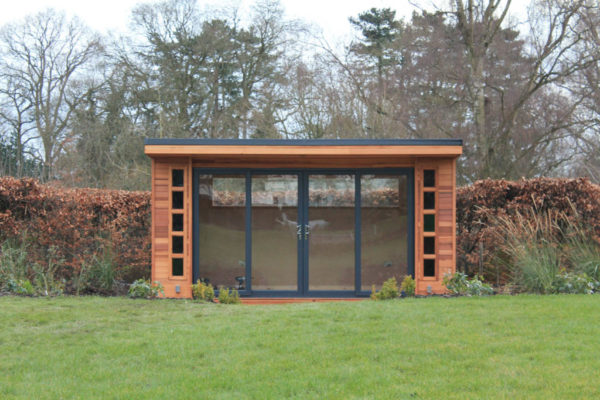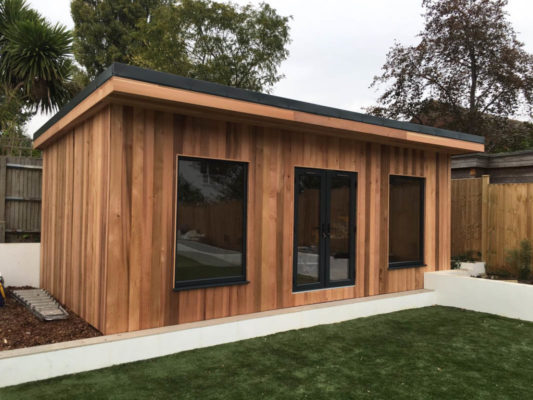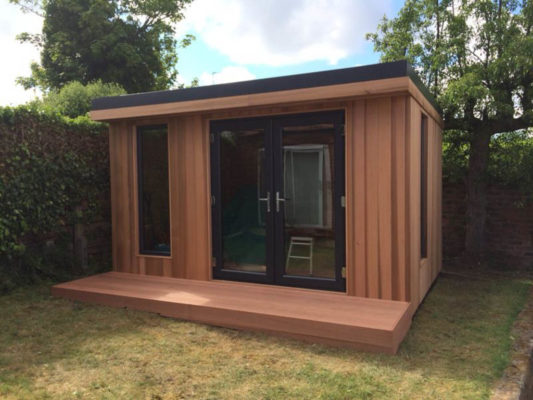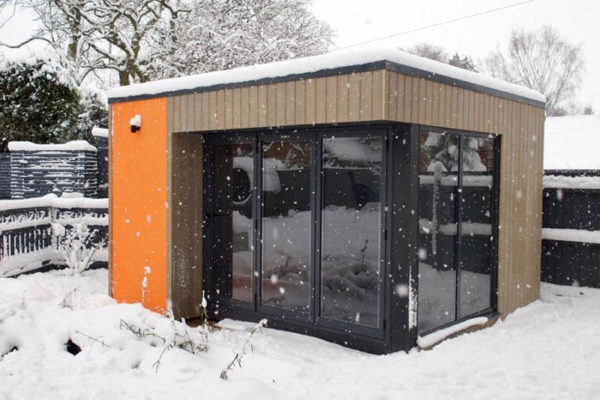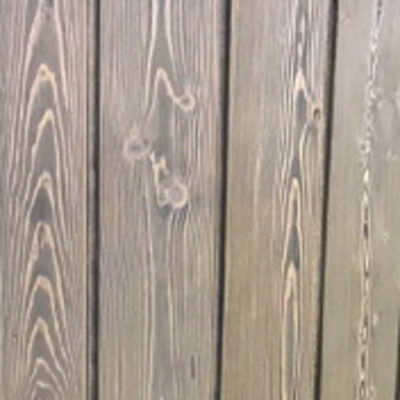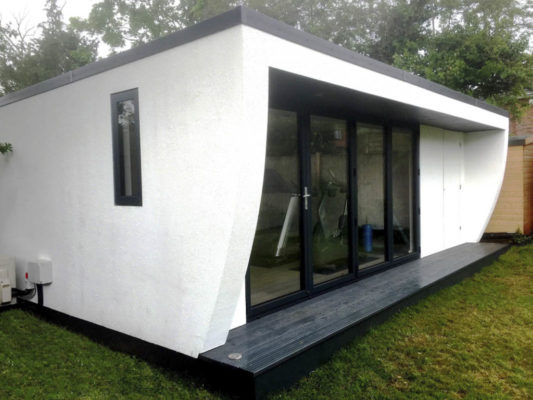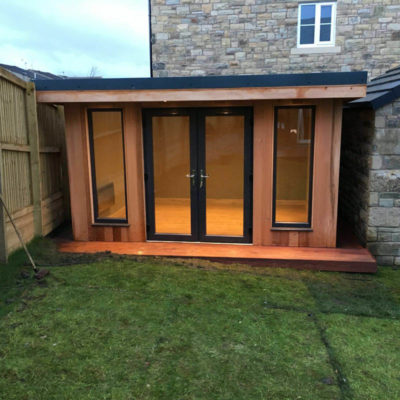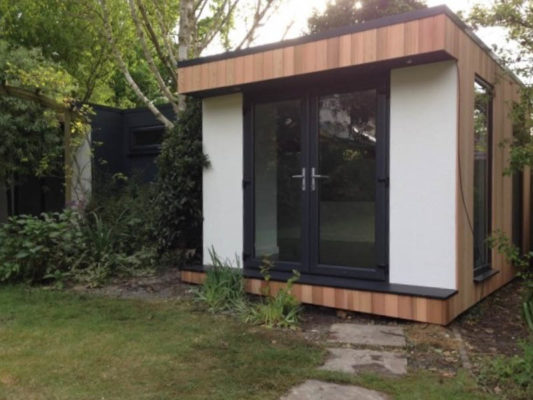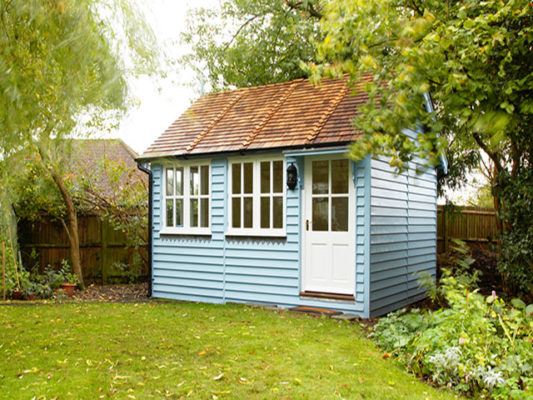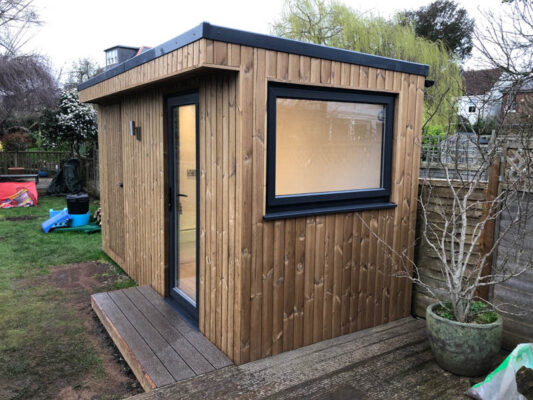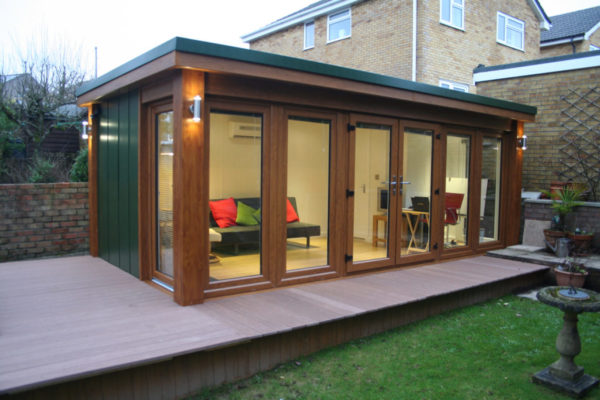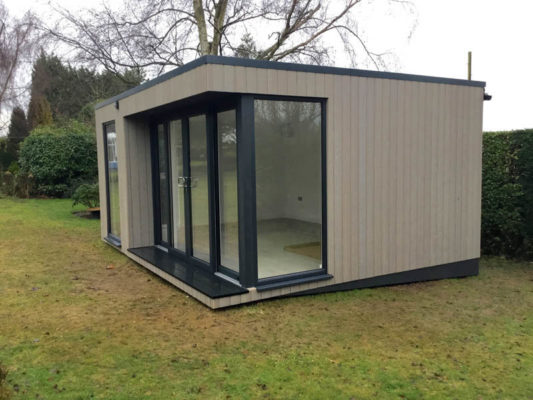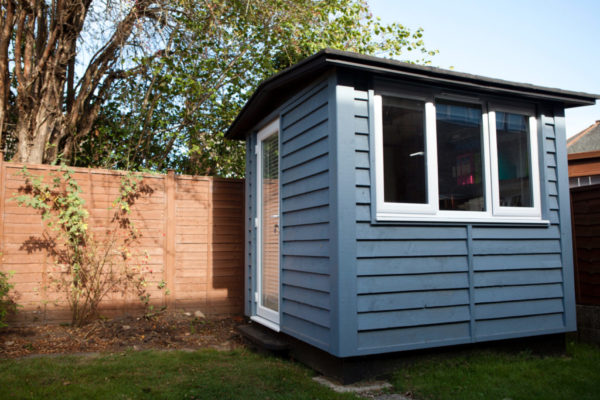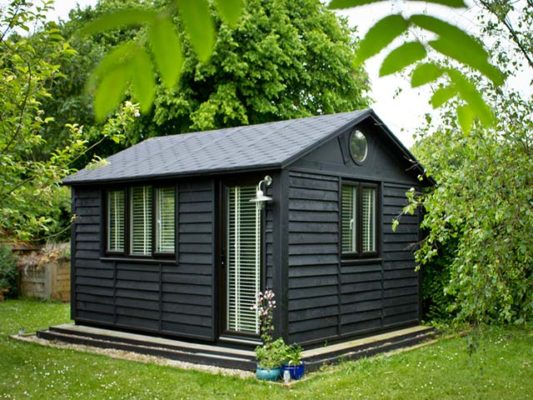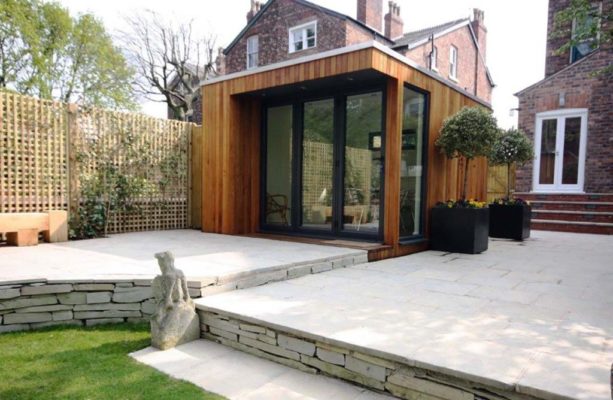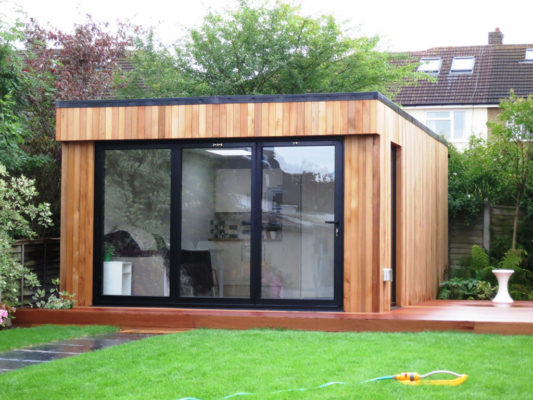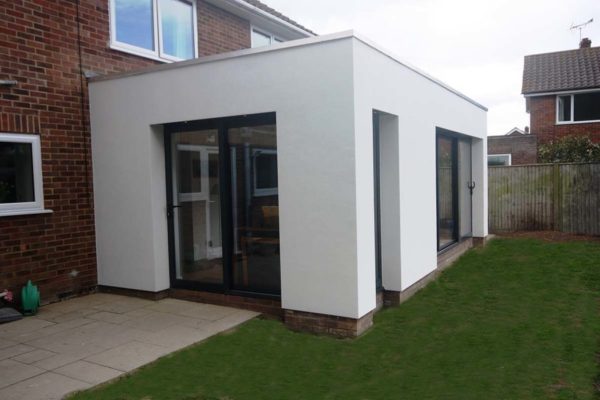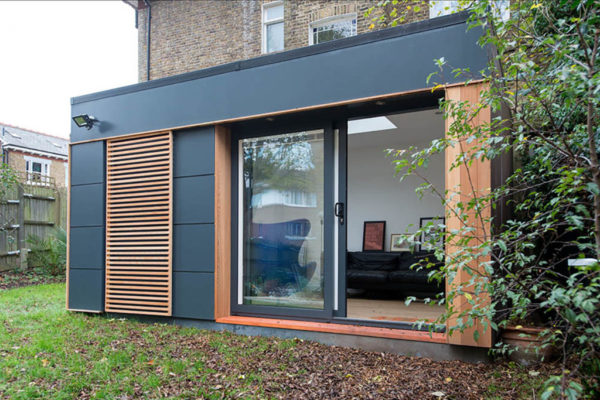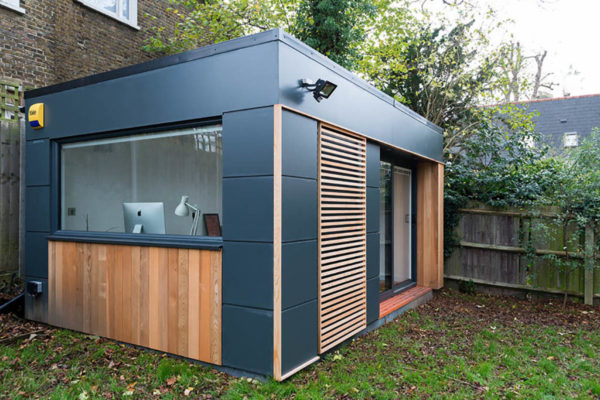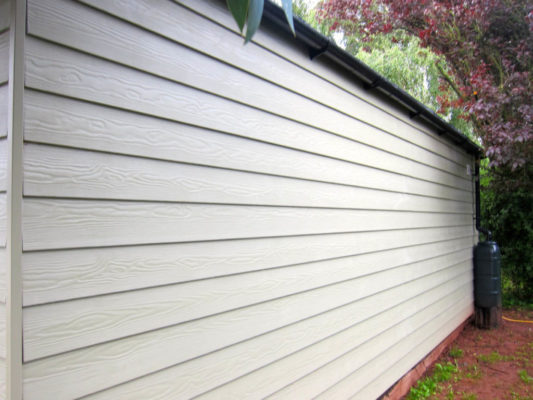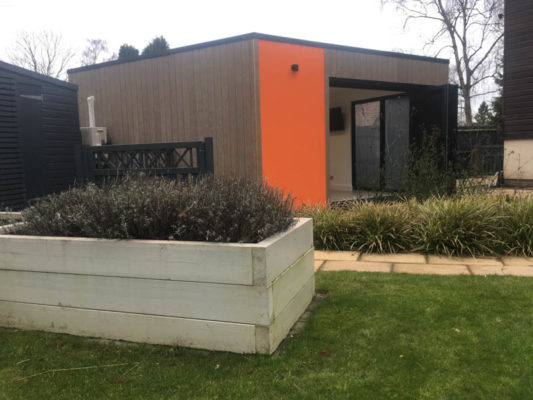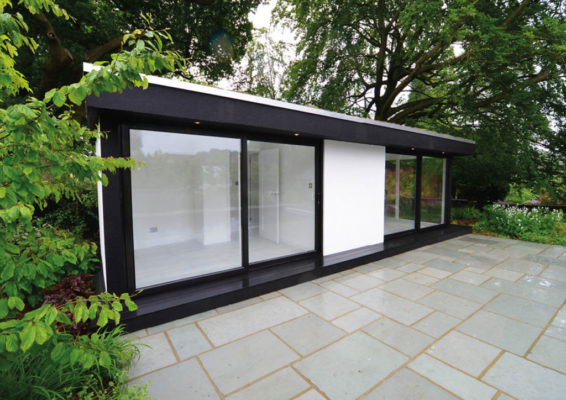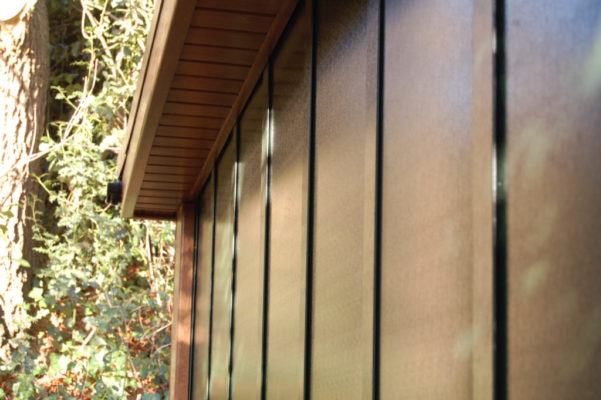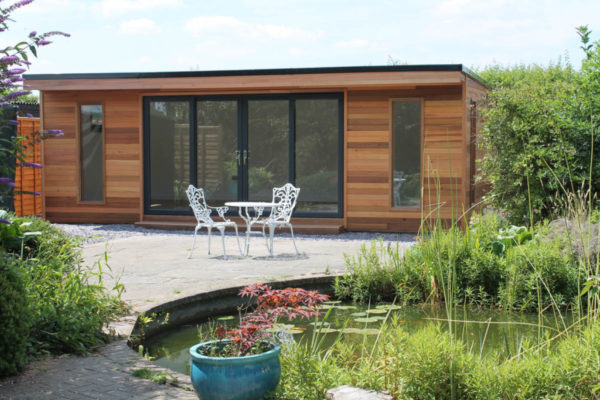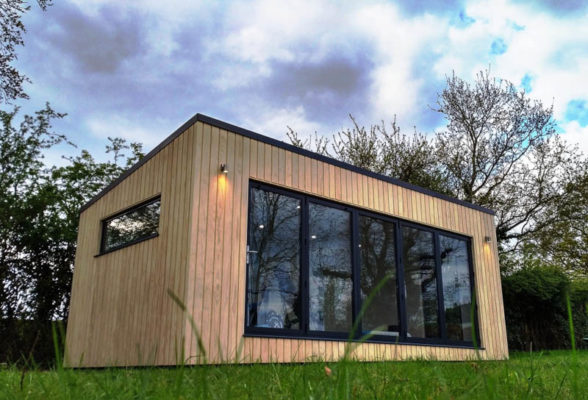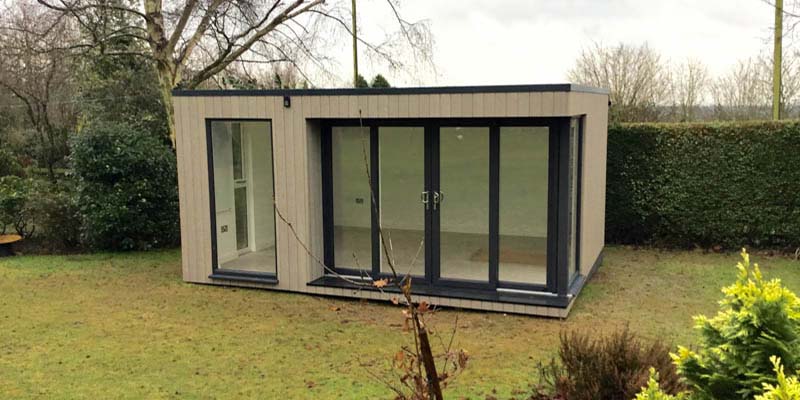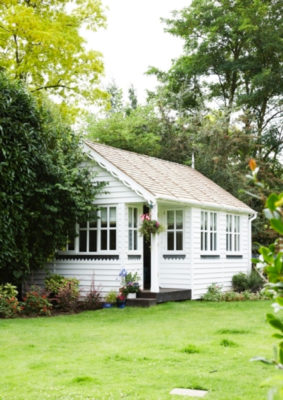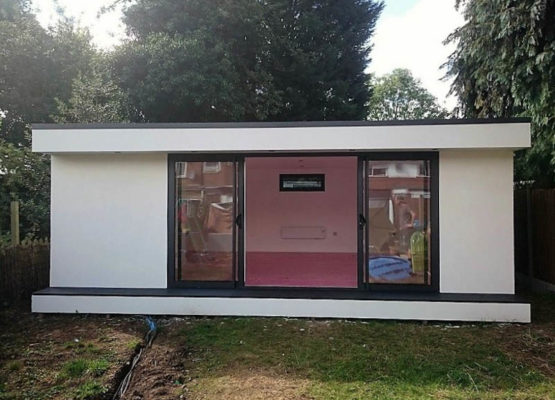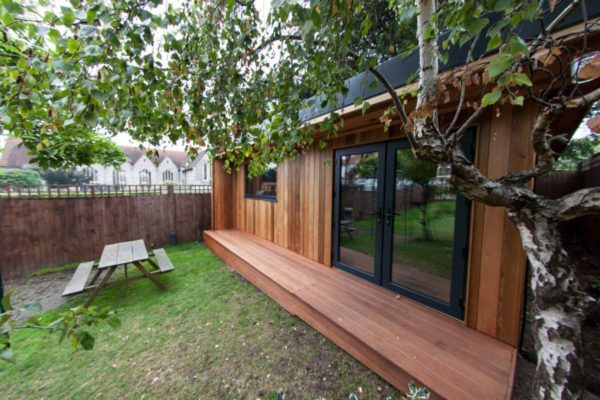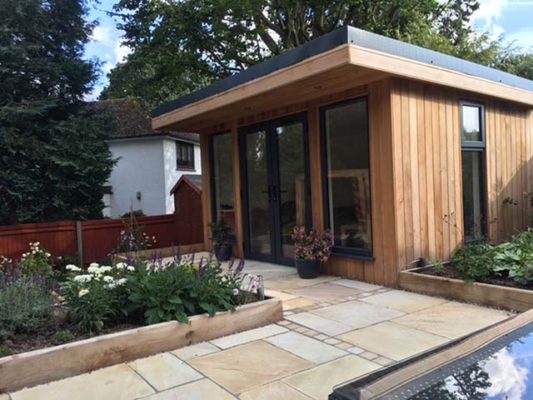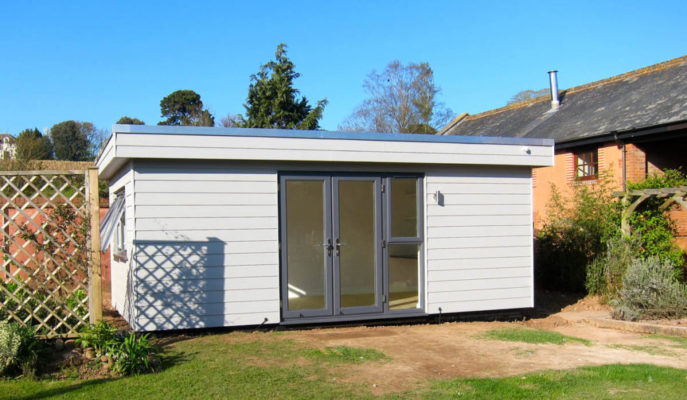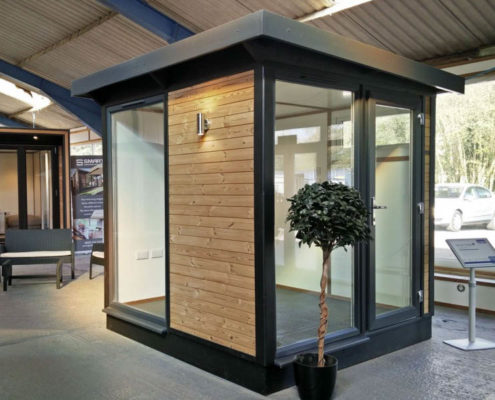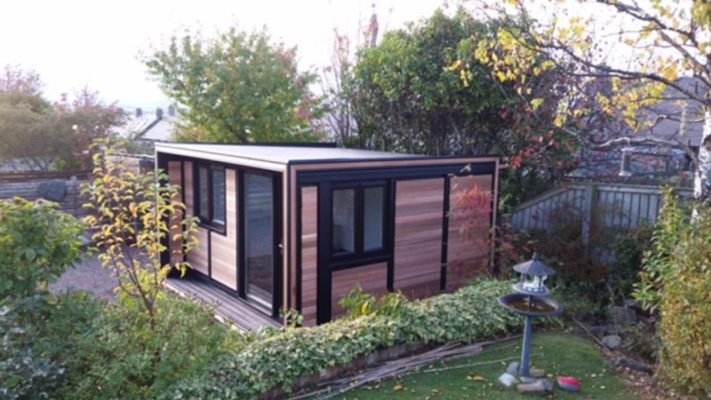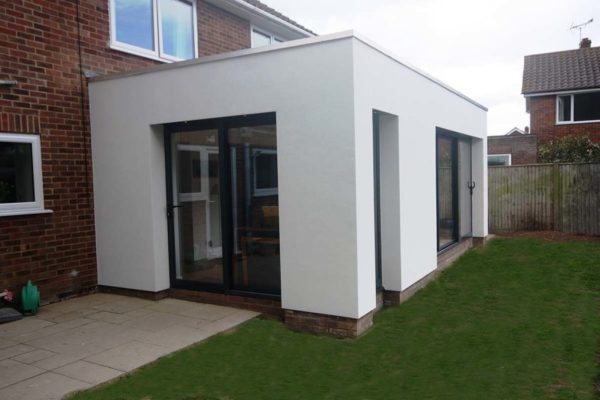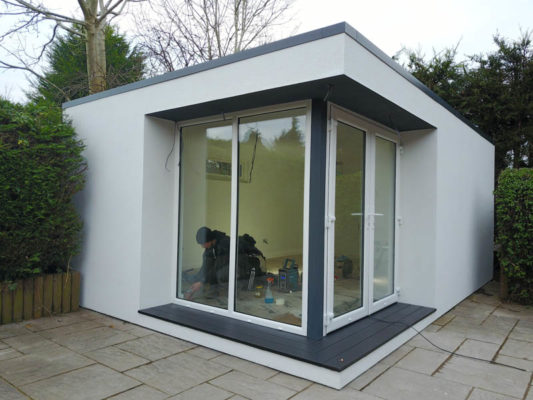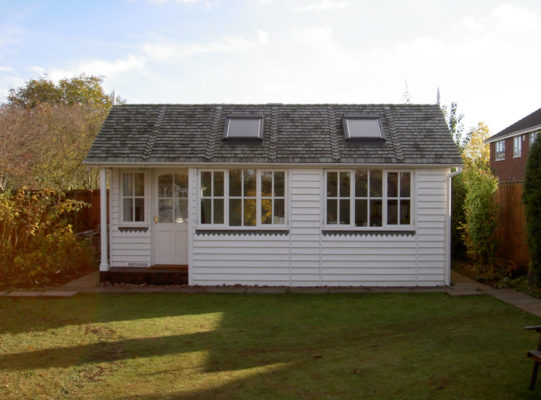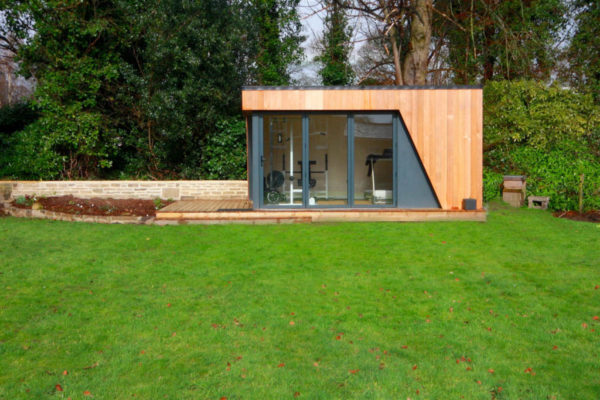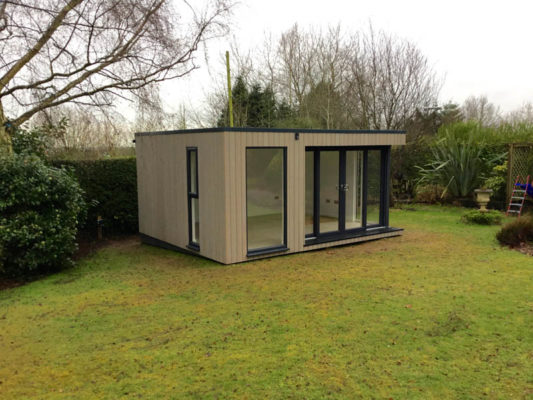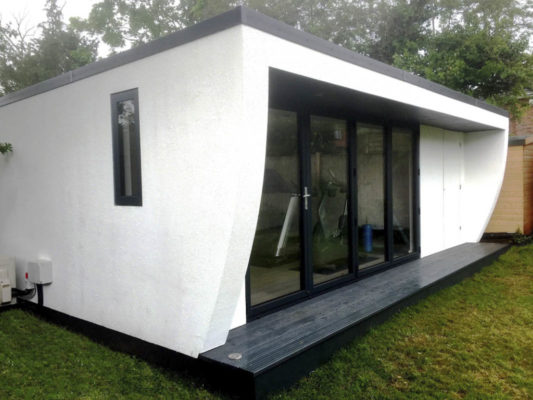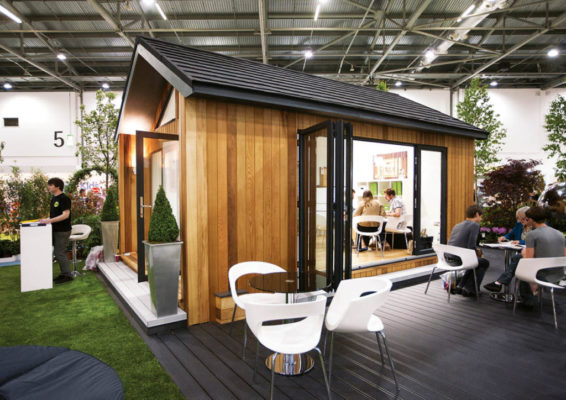The external cladding finish you choose will have a big impact on the appearnce of your garden office
The material you choose for the exterior cladding will have, perhaps, the biggest impact on the appearance and durability of your garden office.
Luckily, you have a large palette of materials to choose from. All of the materials available are chosen for their durability. Some materials will require ongoing maintenance to keep them in optimum condition, while others have a natural durability and will need only a little maintenance. Some companies offer composite cladding materials which will require virtually no maintenance going forward.
Let's explore some of your cladding options when buying a garden office:
Cedar Cladding
Cedar cladding is by far the most popular choice for garden offices. It has become popular for two reasons: it's natural reddish brown colouring and its natural durability against fungal attack and rot.
Cedar has a long maintenance free lifespan of 25+ years. Having said that, if you want to maintain the new, reddish brown colour you will have to have a UV-oil applied and keep it topped up. Otherwise, the Cedar will weather to a silver grey colour within a few years. This change in colour does not affect the durability of the cladding, but it does change the appearance of the building.
The majority of garden office companies offer Cedar cladding as a premium option. These examples by Garden Spaces, Smart Garden Offices and Swift Garden Rooms show the rich reddish-brown colouring of newly fitted Cedar.
Thermowood Cladding
Thermowood is a heat-treated pine softwood. By treating the wood at temperatures in excess of 200°c, chemical and structural changes occur in the wood, making it highly durable. The process also makes the timber more dimensionally stable, making it ideal for exterior cladding. Thermowood has an estimated 30-year lifespan.
Thermowood is often left uncoated, with the grain and knots of the pine on-show. Over time, it will start to go silvery grey.
Many painted garden offices are clad in Thermowood with the paint or stain applied. If you are interested in a coloured cladding finish, take a look at these design ideas.
Thermowood is often the standard finish on modular garden office designs.
These projects by Ark Design Build and Smart Garden Offices demonstrate what Thermowood cladding looks like.
Siberian Larch Cladding
Siberian Larch cladding is growing in popularity as an option for garden offices. It has become a popular alternative to Cedar as it costs significantly less but offers similar long-term natural durability.
Newley installed it has a more golden colouring than Cedar. The slow-grown trees create a straight grain with fewer knots than Thermowood.
Siberian Larch, like Cedar, can be left untreated to weather to a silvery grey, without affecting the durability of the wood.
Timeless Garden Rooms utilise featheredge Siberian Larch boards on their Contemporary Range which create a wall with real texture.
Garden Spaces have adopted a modified Siberian Larch which has been coated on all sides with a preservative that ensures even weathering. The process gives the boards a contemporary grey hue.
This SIPS Garden Room showcases the beauty of the grain pattern that Larch offers.
Painted Cladding
Coloured garden offices remain a timeless choice. So much so, we have created a page dedicated to them and the finishes used to create them.
In many cases, Thermowood or Larch forms the basis of a painted finish. There are a few companies who will stain Cedar.
Feather edge cladding, shiplap and tongue and groove are the most common cladding profiles used in painted designs. In some cases, where a smoother finish is required, exterior grade plywood is fitted.
Paints and stains are chosen that offer a long interval between recoating. Depending on exposure you would expect to get at least five years between maintenance intervals.
These images by Garden2Office, Smart Garden Offices and Timeless Garden Rooms show how painted finishes look equally good on both contemporary and traditional style buildings.
Composite Claddings
Composite claddings are growing in popularity as the external finish for a garden office. There are two main types of composite cladding used: cement fibre board and composite wood.
Cement Fibre Boards
Cement fibre boards such as Cedral and Hardie Plank are commonly used. The cladding planks are made from a mixture of cement and fibres creating a hard, dimensionally stable board. The boards are pre-coloured and have a wood grain surface. Cedral, for instance, is available in 23 different colours. Because the colour pigment is added during production, the boards don't need repainting.
Cement fibre boards are popular because of their low maintenance properties, but it's their low fire rating that has seen a growth in their use. This makes it a particularly useful material if you are planning on building within 1 meter of a boundary.
Some companies use cement board sheets as cladding rather than planks. Some companies choose a smooth board and others a more rural corrugated board. These boards are often painted in dark grey or black masonry paint. Sheeting like this is often used on the side or rear walls, with a more expensive finish like Cedar on the front wall.
Composite Wood
Composite wood projects have come a long way over the last few years. The first examples we saw used in garden office design were thin and the finish not realistic. Today, composite woods such as Dura Composites, WeatherTone and Enviro Builds Hyperion are much better quality.
Composite wood is made from a mixture of real wood fibres and resins, creating a tough, dimensionally stable product. Like the cement boards mentioned above, composite wood cladding has the colour pigment added during manufacturing. The boards retain their colour and won't need repainting.
Composite wood comes in wood colours such as Cedar and a palette of greys. Some companies offer a wood grain surface and a brushed surface. The brushed surface offering a contemporary look.
The composite wood cladding offered by Dura and Enviro Build comes with a secret fixing system, so there are no visible fixings.
In the photos below, the two buildings by Executive Garden Rooms feature Cedral cement board cladding, while the example by Swift Garden Rooms is clad with a composite wood board.
Metal Claddings
Metal cladding is another low maintenance option for the exterior of a garden office.
The key name for metal clad garden offices is Booths Garden Studios who have chosen colour coated steel sheeting as part of their no maintenance build-up.
They offer the cladding in a few colours the most popular being the dark green and grey finishes. The surface of the sheets has a leather-like grain.
Powder coated aluminium is growing in popularity as a garden office cladding. It is normally mixed with a timber cladding such as Cedar. Normally, the aluminium panels are colour matched with the door and window frames, for a sleek finish.
Bespoke designers Swift Garden Rooms use aluminium cladding, often mixed with timber sections. As we can see the panels are colour matched with the sliding doors.
Render Finishes
Render is offered by a few garden office companies. Either the whole building is rendered or it is used to create a specific design feature.
Modern resin based renders are used. Acrylic and Silicone Silicate renders are used. They are chosen as the resins in the mixes help repel moisture, they are less likely to stain or crack. Systems such as K-Rend come pre-coloured so they don't then need painting.
Crisp white render is the most common option, but companies such as Garden Spaces will also colour match the render with the doors frames and roof trims to create a feature corner. Or, mix a bright colour like this orange with Cedar cladding.
Burnt Wood Cladding
A traditional Japanese method, but new to garden office design is burnt wood cladding. Timbers such as Larch have the surface of the board charred with a flame torch. The process of helping preserve the timber against fungal and insect attack.
A wire brush is used to remove the excess char, and in doing so revealing the grain of the wood which is enhanced in the process.
Slate & Brick Cladding
Another material that we are seeing being mixed with timber cladding is slate. Feature walls are created by using slate tiles made up of smaller sections of slate which are different thicknesses, creating an interesting, tactile finish.
The palette of grey hues in these walls marries well with dark grey door and window frames but offers a sharp contrast to the colour and texture of Cedar cladding as we can see on this Contemporary Garden Room.
Brick external finishes are another option. Rather than use traditional bricks, companies such as Crown Pavilions use a brick slip system. These thin bricks have the colouring and texture of real bricks but are quicker to install and detail than building a traditional wall.
- All
- Cedar
- Larch
- Thermowood
- Painted Finishes
- Composite Finishes
- Metal
- Render
Talk with a
Garden Office
Expert
Has this page given you ideas for your garden office project? Well, the next stage is to talk to a few garden office experts who specialise in creating personalised garden workspaces. They will work closely with you to turn your vision into a reality.
